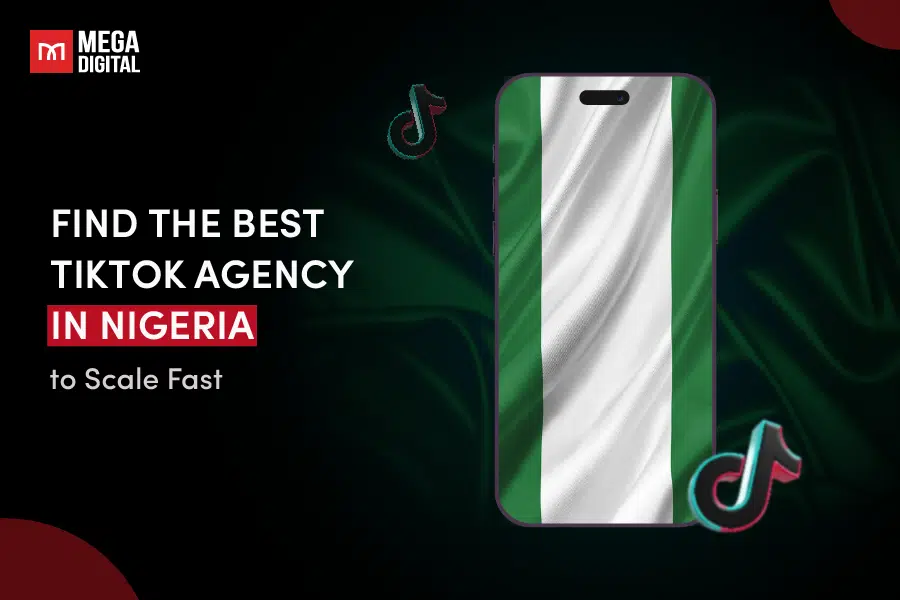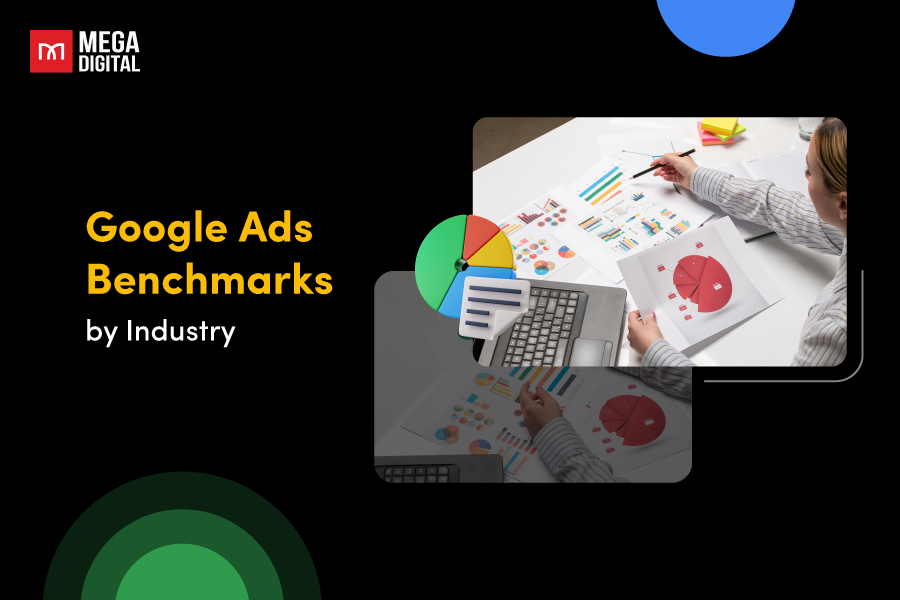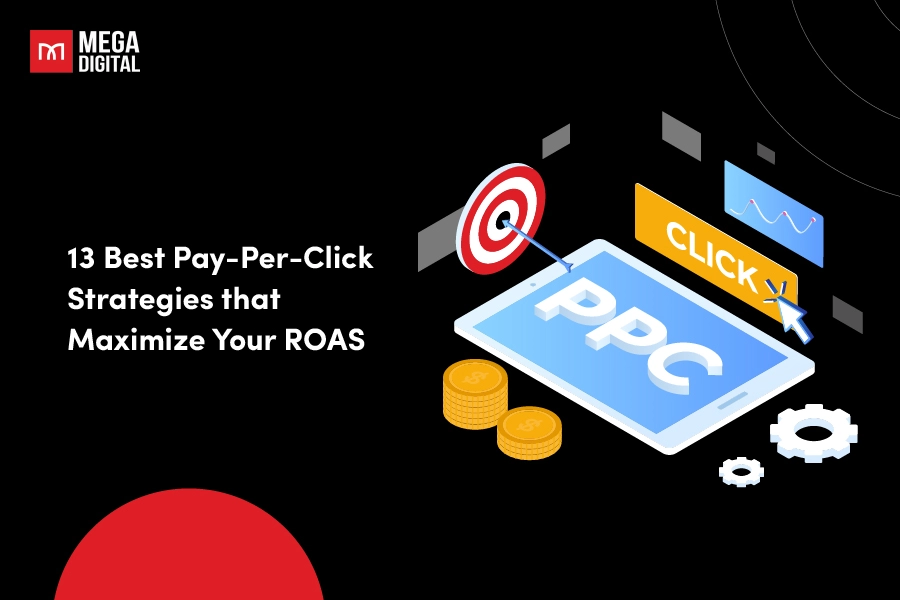If you are looking for a quick and effective way to promote your product, mastering the Pay Per Click ad is a must! In this guide, I will break down everything you need to know about pay-per-click advertising and share some insider tips to make your ads work more effectively. Let’s dive right in!
- What is Pay Per Click (PPC) Advertising?
- How Does Pay-Per-Click Advertising Work?
- How Much Do PPC Ads Cost?
- Benefits of Using Pay-Per-Click Advertising
- 4 Basic Components of Paid Search
- Common Pay-Per-Click Ad Platforms
- Best Practices for Running Effective PPC Campaigns
- Common Mistakes to Avoid in PPC Campaigns
What is Pay Per Click (PPC) Advertising?
Pay-per-click is a digital marketing model in which advertisers pay a fee for each click on their ad. Basically, it is a means of purchasing visits to your website rather than earning them organically.
In addition, PPC ads can appear on platforms like search engines (Google, Bing), social media networks (Facebook, Instagram), and even websites through display advertising, giving advertisers multiple ways to reach their target audience.
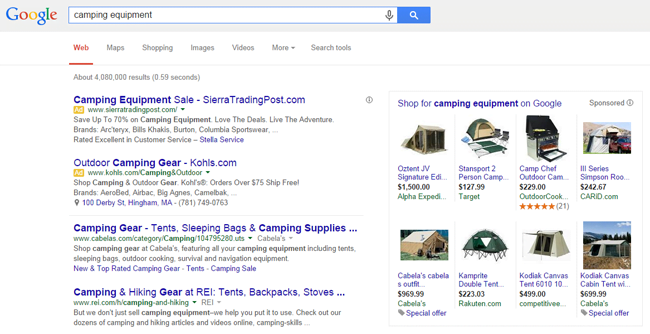
The most common type of PPC is search engine advertising, where advertisers bid on keywords related to their products or services. In this auction-style system, the platform determines which ads to display and in what order, based on both the bid amount and the quality of the ads.
How Does Pay-Per-Click Advertising Work?
Pay-per-click advertising operates on a bidding system where advertisers compete to showcase their ads based on specific keywords and in this part, I will give you a breakdown of how it works:
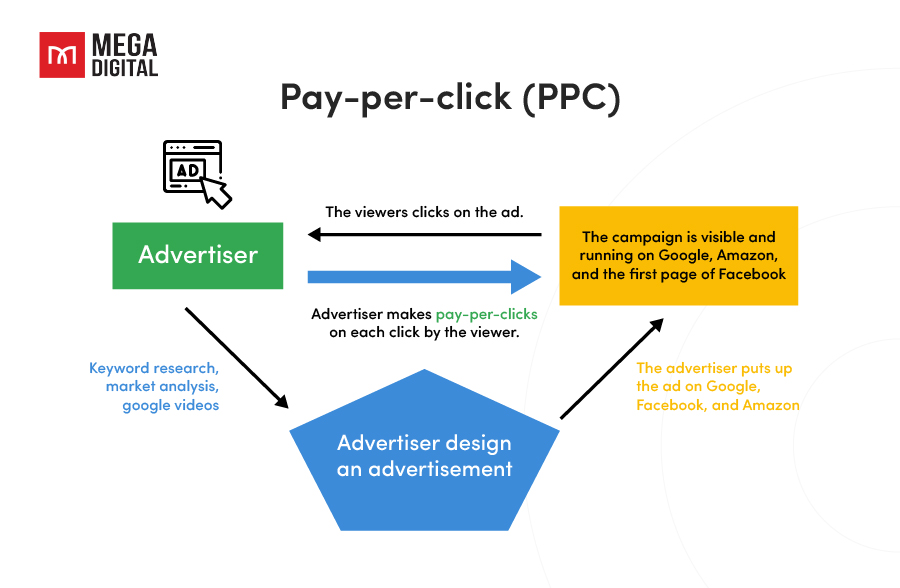
- Keyword Selection: It begins with selecting relevant keywords that help the search engine decide when to display the ads.
- Max Bid: After choosing the keywords, advertisers set a maximum bid, which can vary based on keyword competitiveness; higher demand often requires higher bids.
- Automated Auction: When a user searches for a keyword, an automated auction starts, evaluating bids and ad quality to determine placements.
- Ad Rank: This evaluation results in an Ad Rank that dictates how and where ads appear in search results.
- Cost-Effective: Advertisers only pay for actual clicks, ensuring their budget goes towards targeted traffic.
- Performance Monitoring: Advertisers can track and adjust their campaigns to optimize ad quality and maximize ROAS.
How Much Do PPC Ads Cost?
In 2024, businesses generally spend between $100 and $10,000 per month on PPC campaigns, with 45% of respondents falling into this range. The average cost per click (CPC) typically ranges from $0.11 to $0.50, while the cost per 1000 impressions (CPM) is usually between $0.51 and $1.00 on platforms like Google Ads and Microsoft Ads.
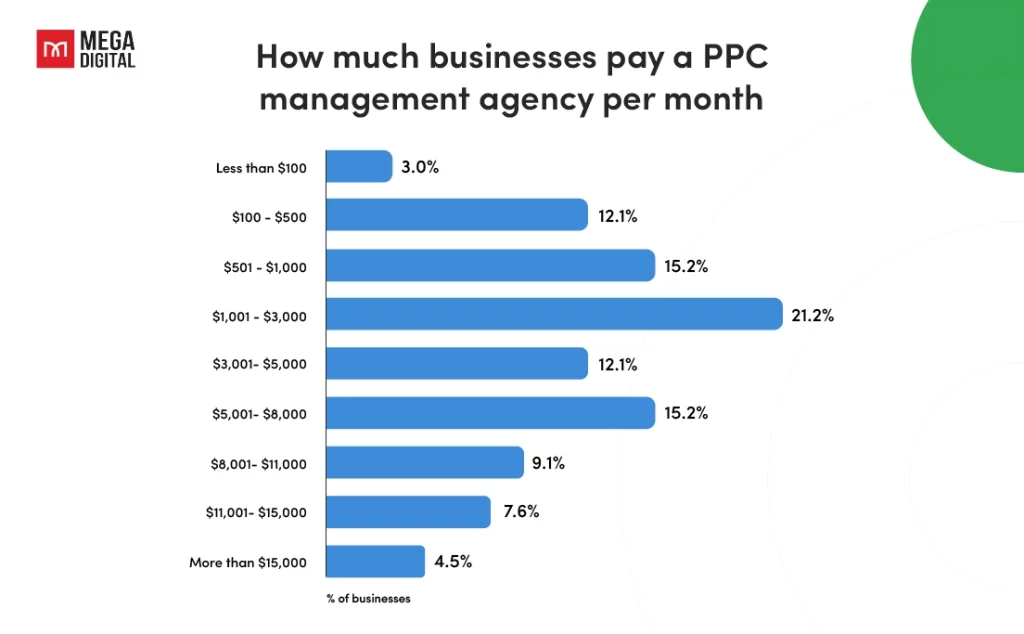
While the average costs provide a good baseline, it’s important to note that PPC expenses can vary significantly based on several factors:
- Industry: Competitive industries like legal and insurance see CPCs of $20-$50, while e-commerce may pay $1-$2 per click.
- Keyword Costs: High-demand keywords can cost over $50 per click, while less popular ones may cost just a few cents.
- Platform: Google Ads generally costs more than Microsoft Ads, with CPCs on Microsoft being 20-30% lower.
- Monthly Budgets: Small businesses may spend a few hundred dollars per month, while large enterprises might allocate $10,000 or more.
We have a full blog list about industry benchmarks for each platform at Mega Digital Marketing Blog; therefore, if you want to learn more about any field, don’t hesitate to give it a try!
Benefits of Using Pay-Per-Click Advertising
Pay-per-click advertising offers businesses an effective way to attract their targeted traffic quickly while providing full control over budget and campaign optimization. Below are the 4 most significant benefits that you must know about PPC.
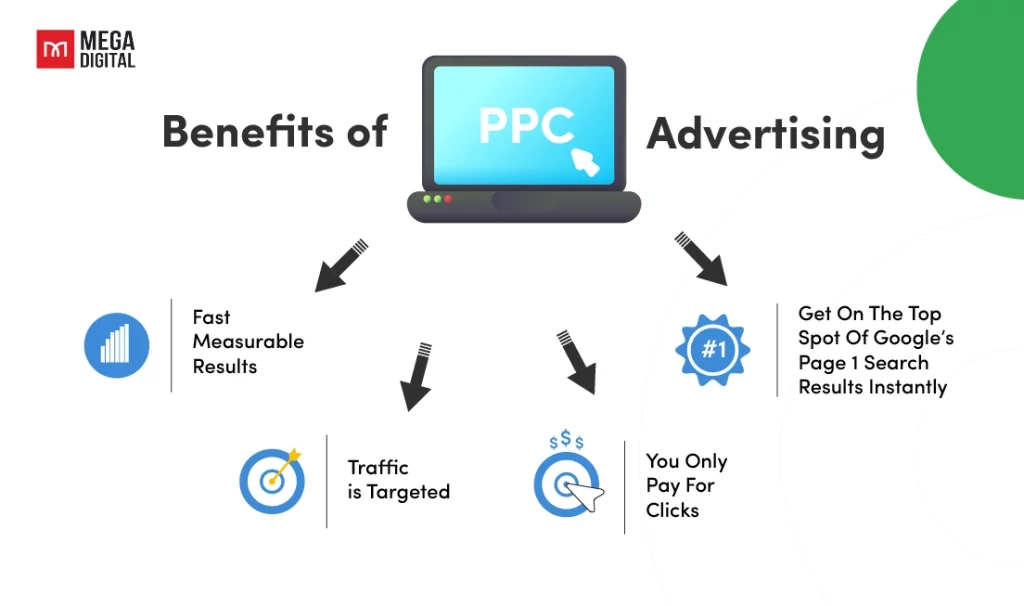
Immediate Results
While SEO can take time to deliver results, PPC ads offer immediate visibility by appearing at the top of the SERP, above organic SEO listings. This prime placement ensures your business gets noticed quickly.
In most cases, ads are approved the same day, providing nearly instant traffic to your website. These ads can take various forms, such as Google text ads, Instagram image ads, or even YouTube video ads, depending on the platform you choose.

Let’s say you own a bakery in Los Angeles, and you launch a PPC campaign using Google Ads with the keyword “best birthday cakes in Los Angeles.” When someone in your area searches for this term, your ad will appear at the very top of the search results page, right above the organic listings.
Highly Targeted
PPC advertising gives marketers the ability to target specific demographics, interests, and locations, making it easier to reach the right audience. Additionally, you can refine targeting by focusing on user behaviors and interests.
For instance, if you’re promoting a new fitness app, you can use Facebook’s Interest Targeting to reach users who have shown interest in fitness-related activities, such as running, weightlifting, or yoga.
Additionally, Behavioral Targeting lets you reach users based on past actions, like those who have purchased fitness equipment or downloaded fitness apps. You can also utilize Custom Audiences to retarget users who have visited your website or engaged with your content.
Measurable Results and ROI
Another remarkable advantage of PPC advertising is the ability to track and measure performance with precision. Platforms like Google Ads and Facebook Ads provide detailed analytics tools, such as Google Analytics and Facebook Ads Manager, that show metrics like click-through rates (CTR), conversion rates, and cost per acquisition (CPA).
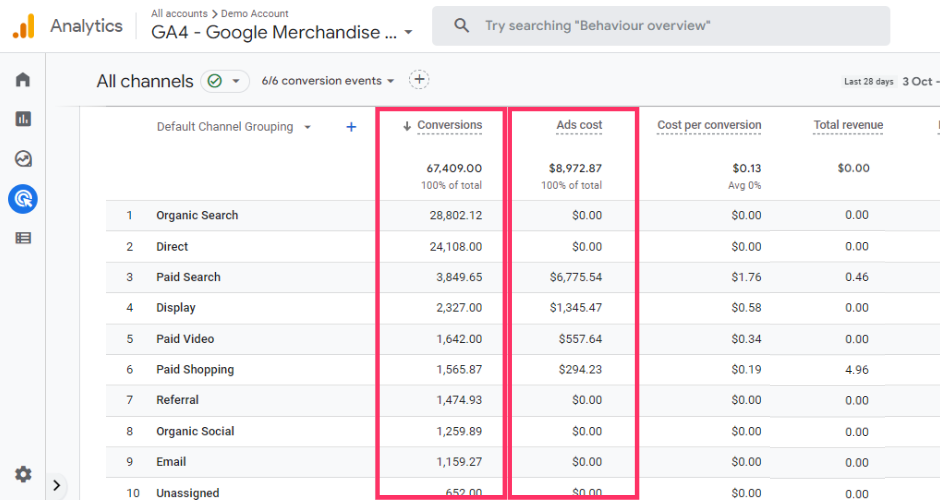
For instance, if you’re running a campaign for a new fitness app, you can use Facebook Ads Manager to monitor your CTR and CPA. Let’s say one of your ads is generating a high Facebook CTR but a higher-than-expected CPA. Using Facebook’s Breakdown tool, you might discover that younger audiences (ages 18-24) are engaging with your ad more but not converting.
Flexibility and Budget Control
PPC advertising also offers flexibility in managing your budget. With PPC ads, you can set daily or monthly limits, control bids for specific keywords, and pause or adjust campaigns at any time to help you stay within budget while maintaining the flexibility to scale up or down efforts based on performance.
For example, a local bakery could run a PPC campaign for Valentine’s Day, promoting heart-shaped cookies or custom gift boxes. Targeting keywords like “Valentine’s Day cookies” and “chocolate strawberries delivery” with a $50 daily budget and $1.50 per click, they could see a 30% rise in foot traffic and a 40% increase in online orders, boosting their ROAS while staying on budget.
4 Basic Components of Paid Search
If you are wondering what is foundational to creating a successful paid search campaign, let me break down the four components of paid search to get you on the right track.
Keyword Research
Paid search platforms like Google Ads and Microsoft Ads (formerly Bing Ads) rely on keywords to trigger relevant ads. These keywords act as signals that prompt ads to appear when users search for related terms. For instance, if someone searches for “bicycle rentals in San Diego,” ads from businesses using keywords like “bike rentals in San Diego” or “bicycles for rent in La Jolla” will show up in the results.
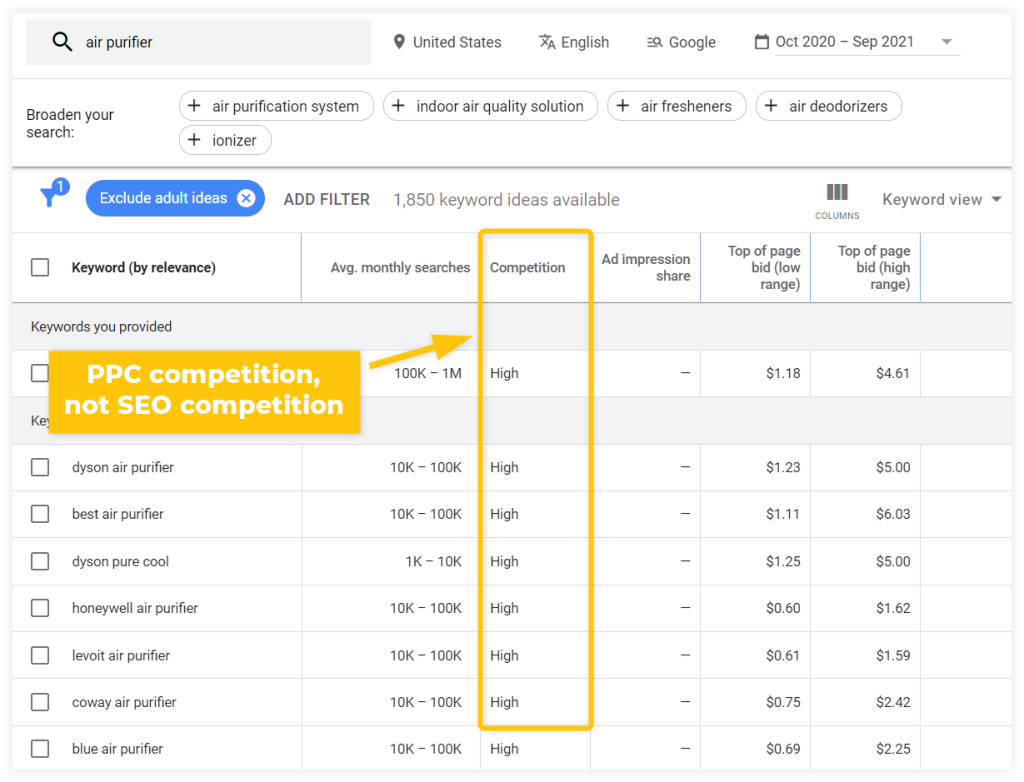
Keywords are key to any paid search campaign, so it’s important to build a list that matches your products or services. In addition to basic terms, using long-tail keywords is a smart choice since they account for 70% of search traffic, are less competitive, and are more affordable, giving you an edge.
Ad Groups
It’s important to understand that a single PPC ad won’t always perfectly match every keyword you target. This is where ad groups come in handy! Ad groups organize related keywords, landing pages, and text ads into clusters. For the best performance, the ads within each group need to deliver a consistent message that matches the searcher’s intent.
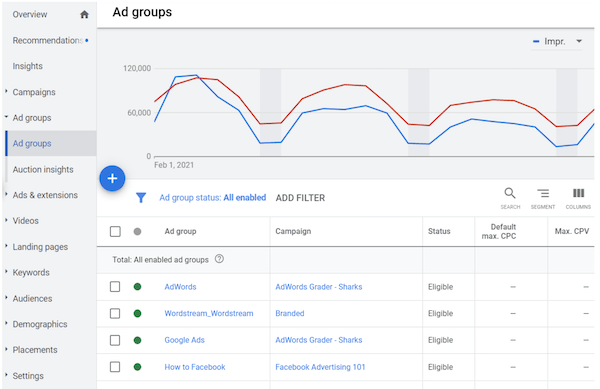
For example, if someone searches for “sushi New York,” and your PPC ad links to a landing page for your sushi restaurant in the area, you’re more likely to convert that searcher. This is because the ad and landing page are aligned with the keywords, creating a seamless and relevant experience for the user.
Ad Auctions
Every time someone performs a search on Google, an ad auction occurs to decide which ads will be shown in the search results. Google doesn’t simply display the highest bidder’s ad, it also considers other factors, like the quality of the ad, to ensure that users get the best experience.
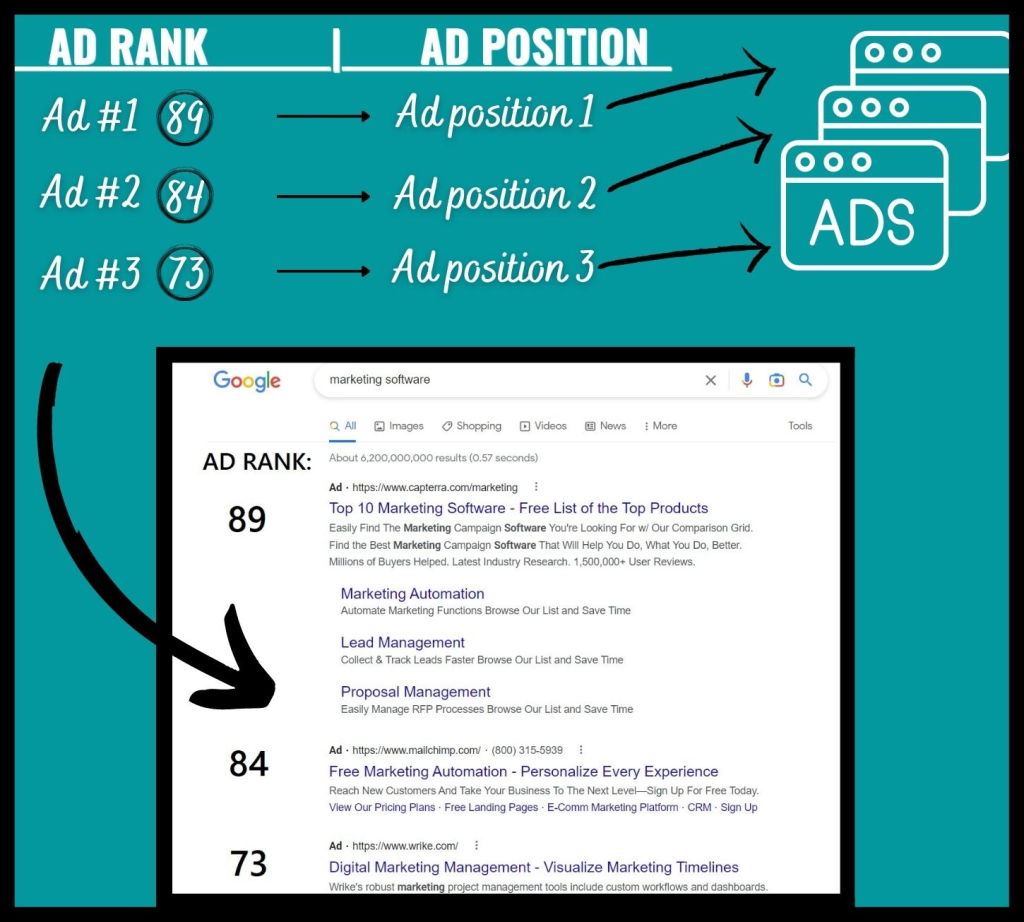
There are three key elements to determine whether your ad will appear and where it will be positioned or not:
- Bid – This is the maximum amount you’re willing to pay for each click on your ad. Bids are flexible and can be adjusted at any time. Fortunately, you often end up paying less than your maximum bid per click.
- Ad Quality – Google assigns a Quality Score to your ad based on how relevant and useful it is to users. You can check your Quality Score in your Google Ads account and remember that higher Quality Scores can reduce your cost-per-click and improve your ad’s placement.
- Ad Extensions and Formats – Adding extensions to your ads, such as location, contact details, or promotions, can boost your ad’s click-through rate and rank.
>>> Read More: Google Ads Auction Insights – Compare Performance & Rank Higher
Quality Score
The Quality Score is Google’s rating of the overall relevance and quality of your ad, including its copy and landing page. This score ranges from one to ten, with eight to ten being considered excellent. Therefore, a higher Quality Score not only improves your ad’s rank but also lowers your cost-per-click.
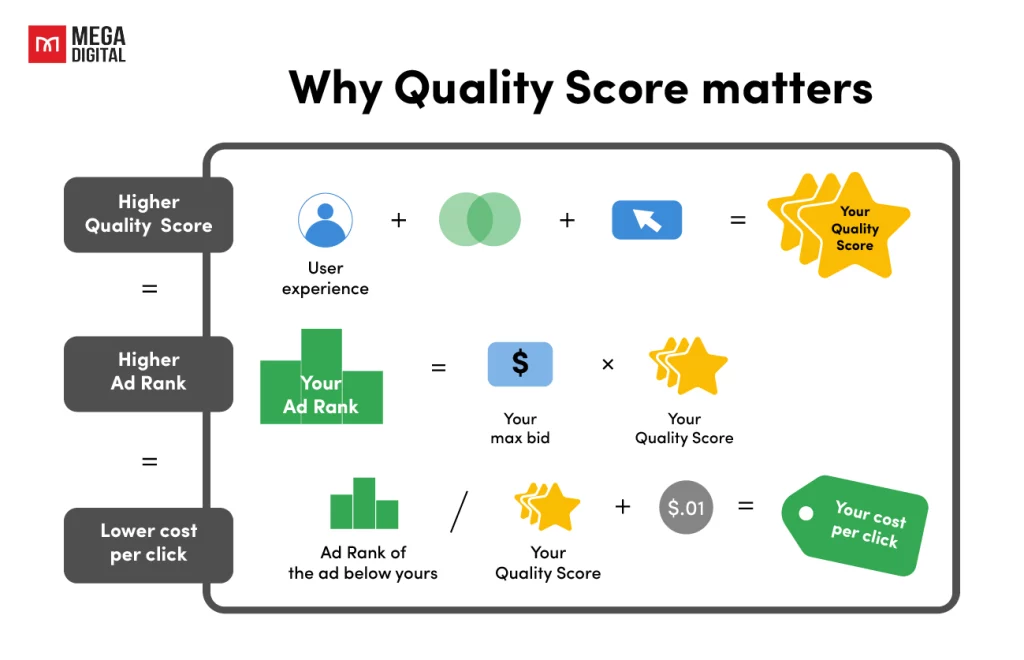
There are also several factors that influence your Quality Score, including click-through rate, ad relevance, landing page experience, and your historical Google Ads performance. Ultimately, all Google wants to ensure that your ad delivers a positive user experience to its searchers.
Common Pay-Per-Click Ad Platforms
There are many PPC platforms to choose from and it is essential to understand which one is suitable for your business. In this part, I’ll give you some of the most popular PPC platforms, each with unique features that suit different business goals.
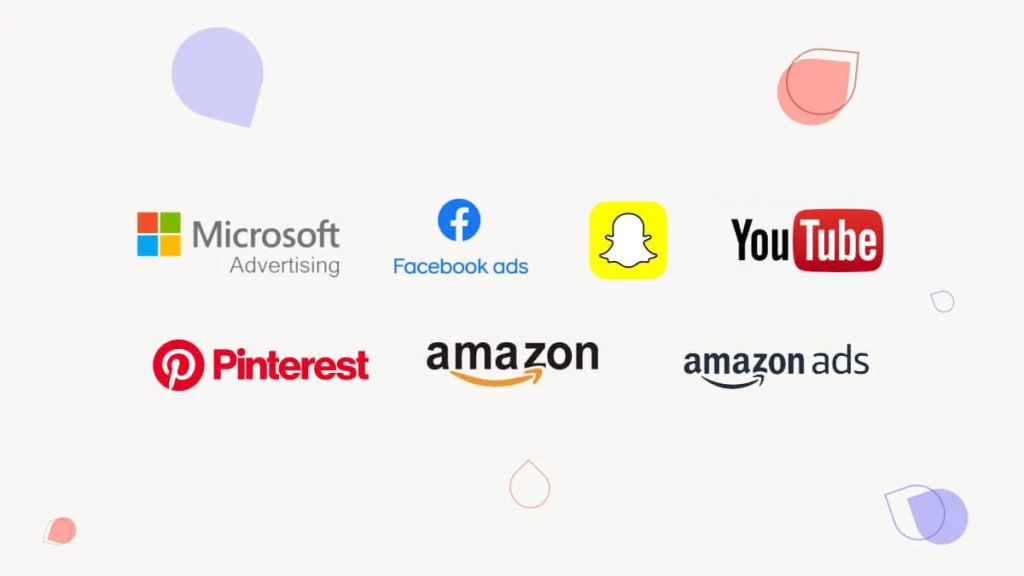
Google Ads
Google Ads stands as the largest PPC platform, processing over 99,000 searches per second, making it ideal for businesses looking to capture users’ search intent. With its intent-based targeting, Google Ads ensures that ads are shown to users who are actively searching for specific keywords, which leads to higher relevance and conversion rates.
For example, a local car dealership could target the keyword “affordable car leasing near me” and appear at the top of search results, driving potential customers directly to their site.
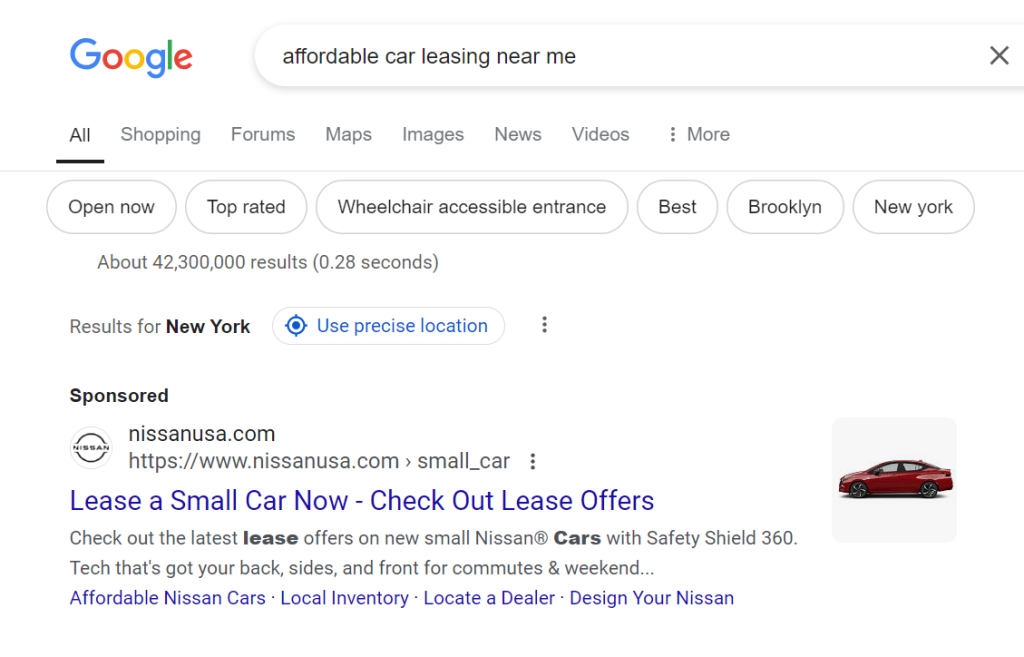
However, this extensive reach comes at a cost. The cost per click (CPC) on Google Ads ranges from $1 to $2, but in highly competitive industries like legal services, the cost can reach upwards of $50 per click. While this makes Google Ads highly effective for businesses aiming for immediate conversions, it also requires a higher budget compared to other platforms.
Meta Ads (Facebook and Instagram)
Meta Ads, which includes Facebook and Instagram, is another popular PPC platform known for its advanced audience targeting capabilities. Businesses can use demographic, interest-based, and behavioral targeting to reach niche audiences.
The platform’s strength lies in its visually engaging ads, particularly on Instagram Stories and Facebook’s news feed, where ads seamlessly blend into users’ everyday content consumption.
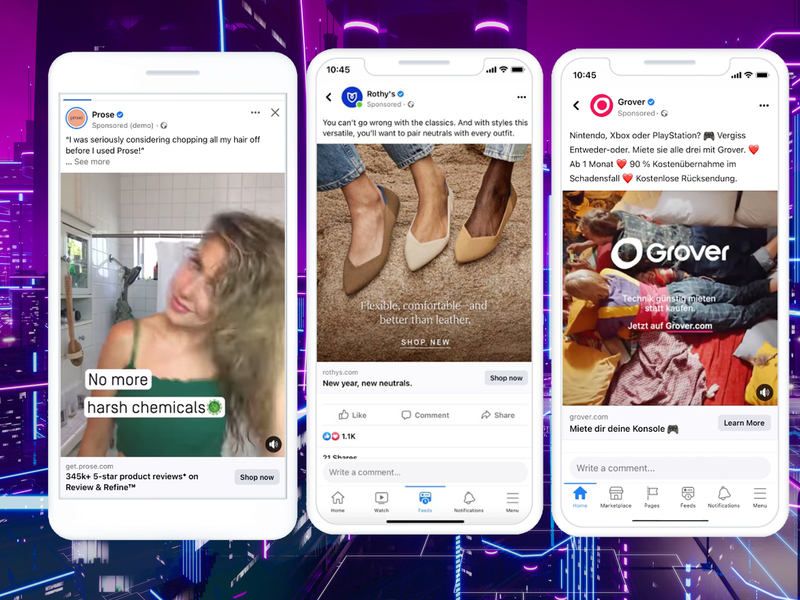
Meta Ads are relatively affordable compared to Google Ads, with an average CPC of around $0.94 on Facebook and slightly higher on Instagram. This makes it a perfect choice for small and medium-sized businesses looking to drive product discovery and engagement.
For instance, an eCommerce store could easily run Instagram ads promoting a seasonal sale to fashion or beauty enthusiasts, capitalizing on the platform’s visual appeal.
>>> Read More: All Types of Facebook Ads – A Comprehensive Guide [2024]
Microsoft (Bing Ads)
Microsoft Advertising, formerly known as Bing Ads, is a powerful PPC platform, especially for businesses looking to reach an older, higher-income audience. Though it’s often overshadowed by Google Ads, Bing accounts for 38% of U.S. desktop searches and has a user base that skews older and wealthier.
For example, a luxury car dealership could use Microsoft Advertising to target professionals aged 40 and above with ads promoting their latest premium models. The CPC on Microsoft Ads is 33% lower than on Google, making it a more cost-effective platform for advertisers looking to reduce their ad spend while still reaching a valuable audience.
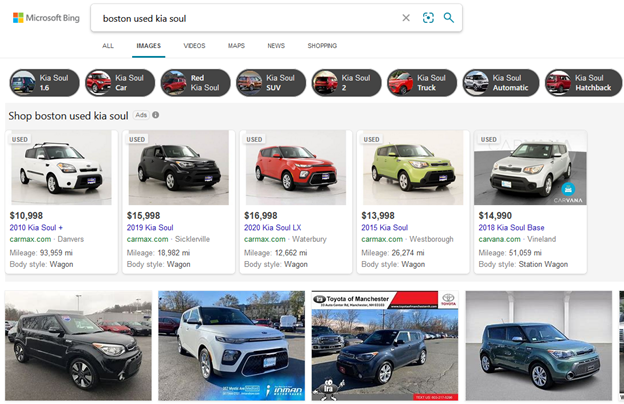
TikTok Ads
TikTok Ads stand out as one of the most affordable options for brands looking to engage with younger audiences, particularly Gen Z and Millennials. The platform’s ad formats, such as In-Feed Videos and Branded Hashtag Challenges, are among the cheapest available today, and they fit naturally within the short-form, creative content that catches the attention of TikTok users.
>>> Read More: All TikTok Ad Types You Need to Know [Update 2024]
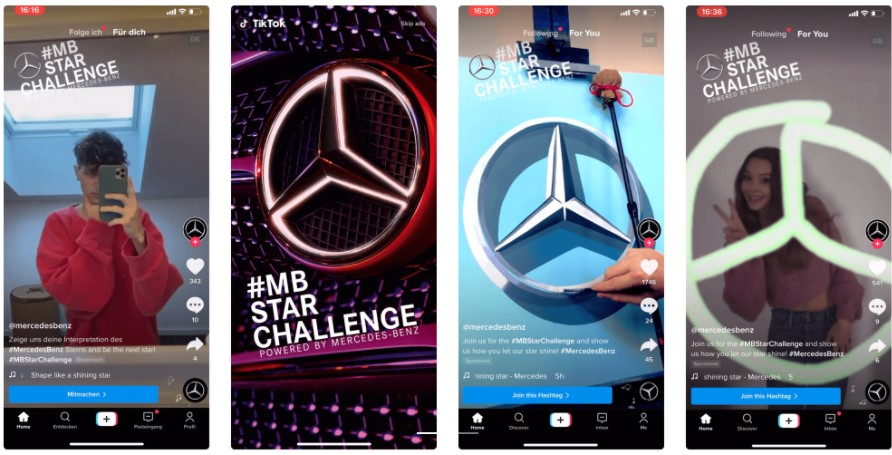
Besides, advertisers can target specific audiences based on demographics, interests, and behaviors, ensuring their content reaches the right people. Ads can be purchased on a cost-per-thousand-impression (CPM) or cost-per-click (CPC) basis, meaning advertisers are charged based on views or clicks.
With an average CPC of around $1 and a CPM ranging from $10 to $30, TikTok Ads provide an affordable and effective way for brands to go viral.
Twitter Ads (X Ads)
Twitter Ads (now X Ads) offers a unique opportunity for businesses to engage with users in real-time, especially during trending topics or live events. This makes Twitter ideal for promoting time-sensitive offers or newsjacking popular discussions.
For example, a brand running a flash sale could use Twitter Ads to promote it during a trending event, ensuring its message reaches a highly engaged audience.

Twitter’s CPC is higher than other platforms, averaging $1.35, but its Cost Per Engagement (CPE) model allows businesses to pay only when users engage with their ads, such as liking, retweeting, or replying. This makes it a smart choice for businesses looking to build meaningful interactions with their audience.
Snapchat Ads
Snapchat Ads is also another excellent choice for brands looking to connect with young audiences, especially Gen Z. The platform offers a range of ad formats, including Snap Ads, Story Ads, and Lenses, which allow brands to create engaging interactive experiences. Plus, the ads integrate seamlessly with user content, making them feel less intrusive.
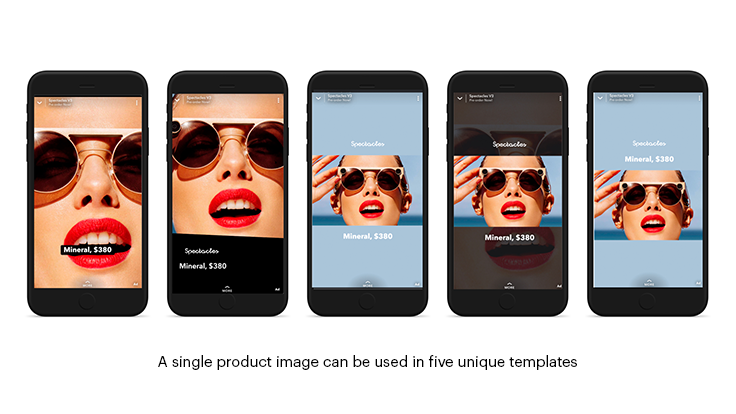
Snapchat’s cost-per-click (CPC) is typically lower than other platforms, averaging around $0.50 to $1. This makes it a cost-effective solution for businesses aiming to promote products or services in a highly visual and creative manner.
>>> Read more: All Snapchat Ads Types Available You Must Know [Updated 2024]
Best Practices for Running Effective PPC Campaigns
If you’re looking to boost the performance of your PPC campaigns, it’s important to follow proven strategies that can drive meaningful results. In this part, I’ll share the best practices I’ve found for running effective PPC campaigns, with specific examples:
Clear Advertising Goals
Without a clear objective, it’s difficult to determine if your ads are truly performing well. Your goals will guide everything from the messaging in your ads to how you measure their success.
To set effective goals, first determine what you want to achieve, like more sales, increased website traffic, or higher engagement. Once your objective is clear, break it into measurable actions. For example, if your goal is to boost website traffic, aim to “increase visits by 25% in 30 days.” Track metrics like click-through rates (CTR) or cost per click (CPC) to monitor your campaign’s progress.
Research and Select the Right Keyword
The keywords you choose should accurately reflect what potential customers are searching for, ensuring your ads are displayed to the most relevant users. In my experience, I suggest you use tools like Google Keyword Planner and SEMrush to identify keywords with high search volume that align with your business offerings.
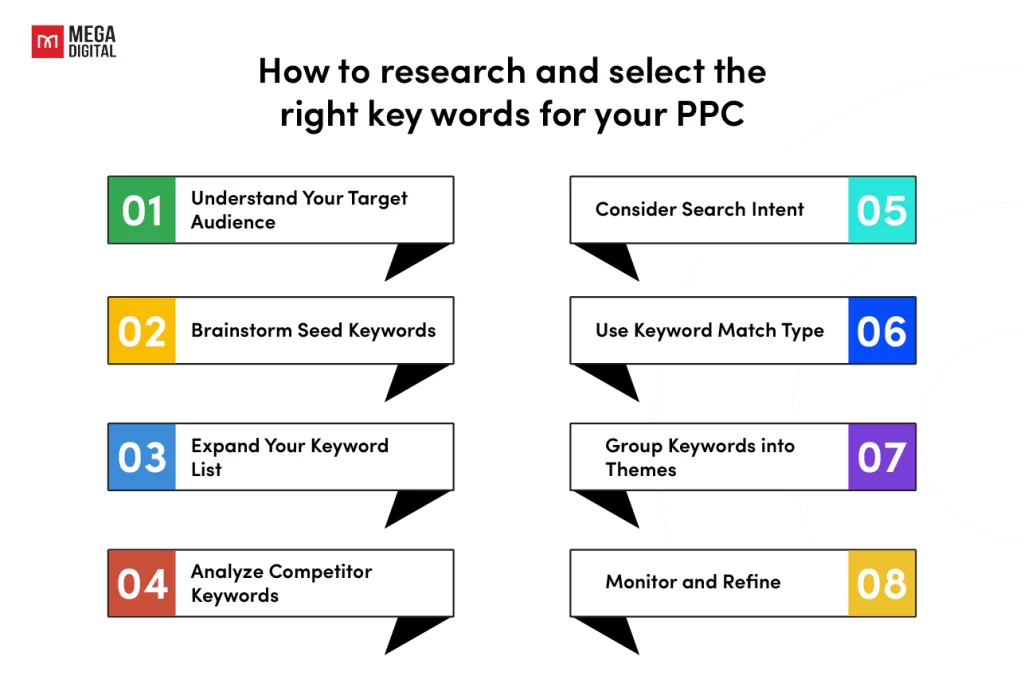
For example, imagine you’re running a PPC campaign for a bakery that specializes in gluten-free desserts. Instead of relying on broad keywords like “bakery,” which are not only highly competitive but also expensive, consider using more targeted keywords. Some phrases such as “gluten-free cake delivery” or “local gluten-free bakery” can effectively reach users who are specifically searching for gluten-free options.
Optimize Ad Copy and Creatives
If you want your ad to not just catch the eye but also resonate with your audience, you can start by crafting ad copy that speaks directly to your audience’s needs and offers a clear solution. And, remember not to underestimate the power of visuals; they should complement your message and help grab attention right away.
To optimize your ad copy, focus on using persuasive language and clear calls to action. Like, instead of saying, “Check out our app,” you might say, “Download now to get the biggest deal of this season!” This creates a sense of urgency and gives the reader a direct next step.
Enhance Landing Page Experience
To effectively convert your PPC traffic into customers, optimizing your landing page experience is essential. First of all, the page load speed must be fast to enhance user experience and reduce bounce rates. It is shown that 53% of users abandon a page that takes more than three seconds to load.
Plus, as many users access your site via smartphones, mobile optimization is also vital. You must ensure your landing page is responsive and easy to navigate, featuring large, clickable buttons like “Shop Now” or “Claim My Discount.” This simplicity allows users to take action quickly, regardless of their device.
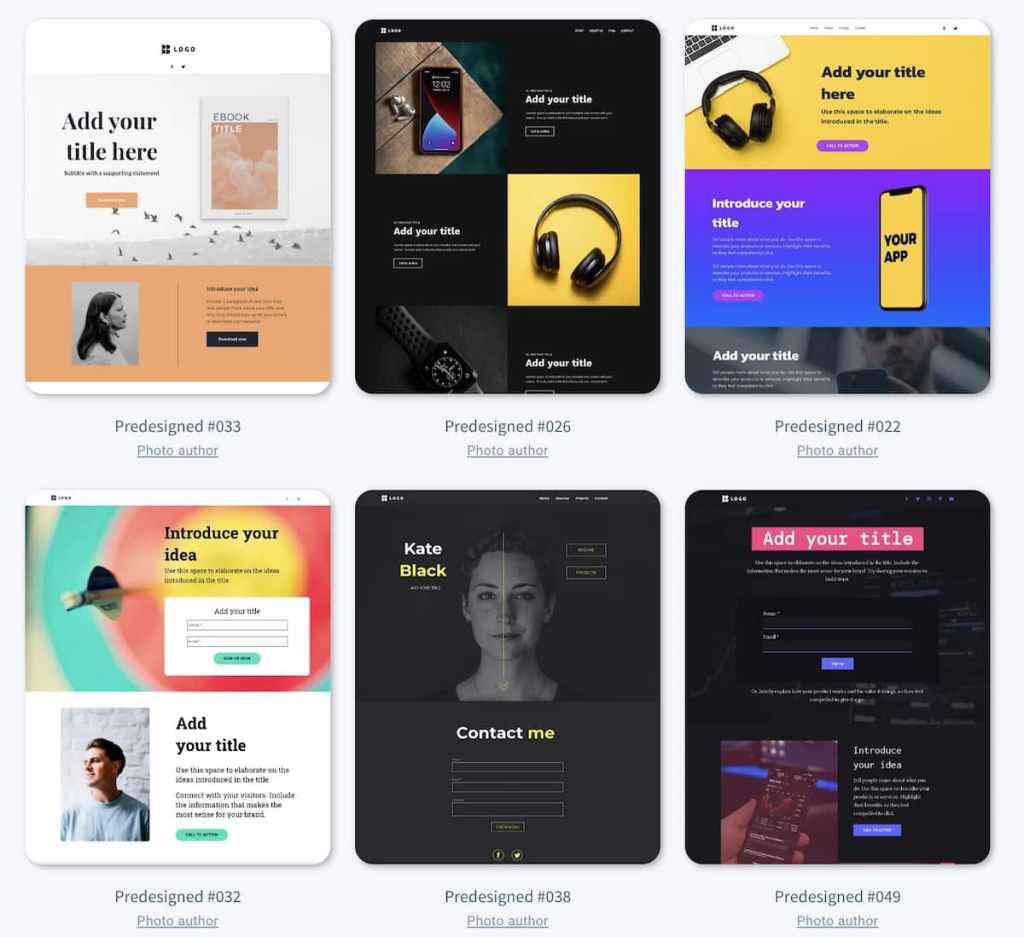
Lastly, you should include clear Calls to Action (CTAs) that align with your ad’s promise. Your CTA should be bold, visible, and aligned with the promise made in the ad. If your ad offers a 50% discount, make sure this is prominently displayed with a CTA like “Get 50% Off Now.”
Common Mistakes to Avoid in PPC Campaigns
To make the most out of your PPC campaigns and boost your advertising ROI, it’s essential to avoid some common pitfalls. Here are some issues I found that addressing them can help you optimize your ads for better performance and ensure your budget is spent effectively.
Neglecting Ad Copy Testing
Using a single version of your ad copy without testing can limit your campaign’s effectiveness. If your ad messaging isn’t engaging or relevant to your audience, you might miss out on higher click-through rates and conversions.
For instance, if you run an online clothing store and use a generic ad that says, “Affordable Clothes for Every Occasion,” it may not resonate with all potential customers. Users might be more interested in specific promotions, such as a discount on summer dresses.
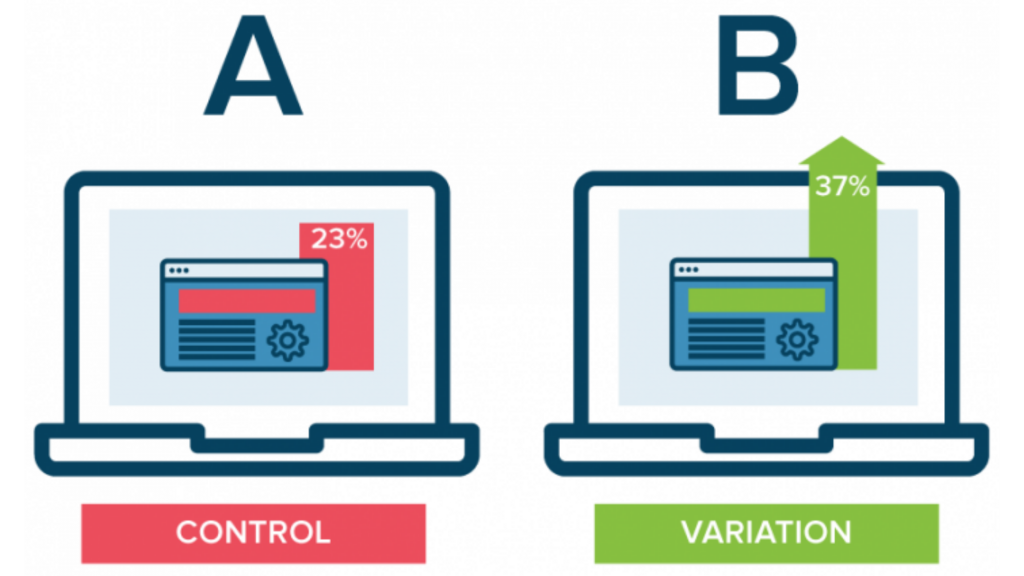
To address this, implement A/B testing by creating different versions of your ad copy. For example, test one ad that emphasizes a discount like “20% Off Trendy Summer Dresses – Shop Now” against another that highlights free shipping like “Free Shipping on Orders Over $50”. By analyzing which version performs better, you can refine your messaging to increase engagement and conversion rates.
Failing to Track Conversions
A major mistake in PPC campaigns is not setting up conversion tracking. Without it, you can’t see which products or keywords are driving sales. For example, if you’re targeting “best anti-aging serum” and “moisturizing face cream,” tracking conversions helps you know which one is actually leading to purchases.
Tools like Google Ads or Google Analytics let you track performance, so you can adjust budgets to focus on high-converting keywords.
Setting and Forgetting Campaigns
The “set it and forget it” approach is a costly mistake in PPC campaigns. If you create your ads and then leave them untouched, you’ll miss out on valuable insights and opportunities to improve.
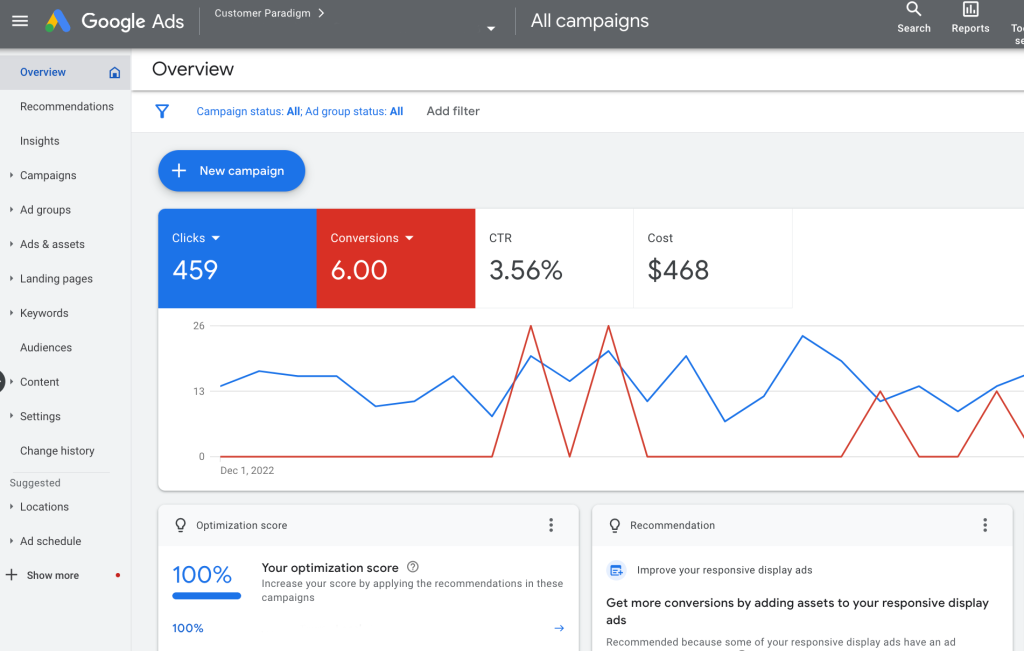
Imagine you run ads for a travel agency promoting vacation packages to destinations such as Bali, Cancun, and Paris. You need to set up ads targeting these locations, expecting high demand.
However, over time, you might find that the ads for Bali are driving more clicks but fewer conversions, possibly due to the rainy season or changes in travel restrictions. Meanwhile, ads for Cancun might be underperforming because of increased competition, and Paris ads may see a spike in clicks due to a new festival or event happening in the city.
>>> Read more: What is PPC Management? A Guide to Monitor Your PPC Strategy
Conclusion
Now I have covered all the bases of pay-per-click ads for you. Don’t worry if it feels like a lot to take in, the key is to start small and keep learning as you go. I hope with some practice and patience, you’ll be creating awesome Pay Per Click Ad campaigns in no time!







